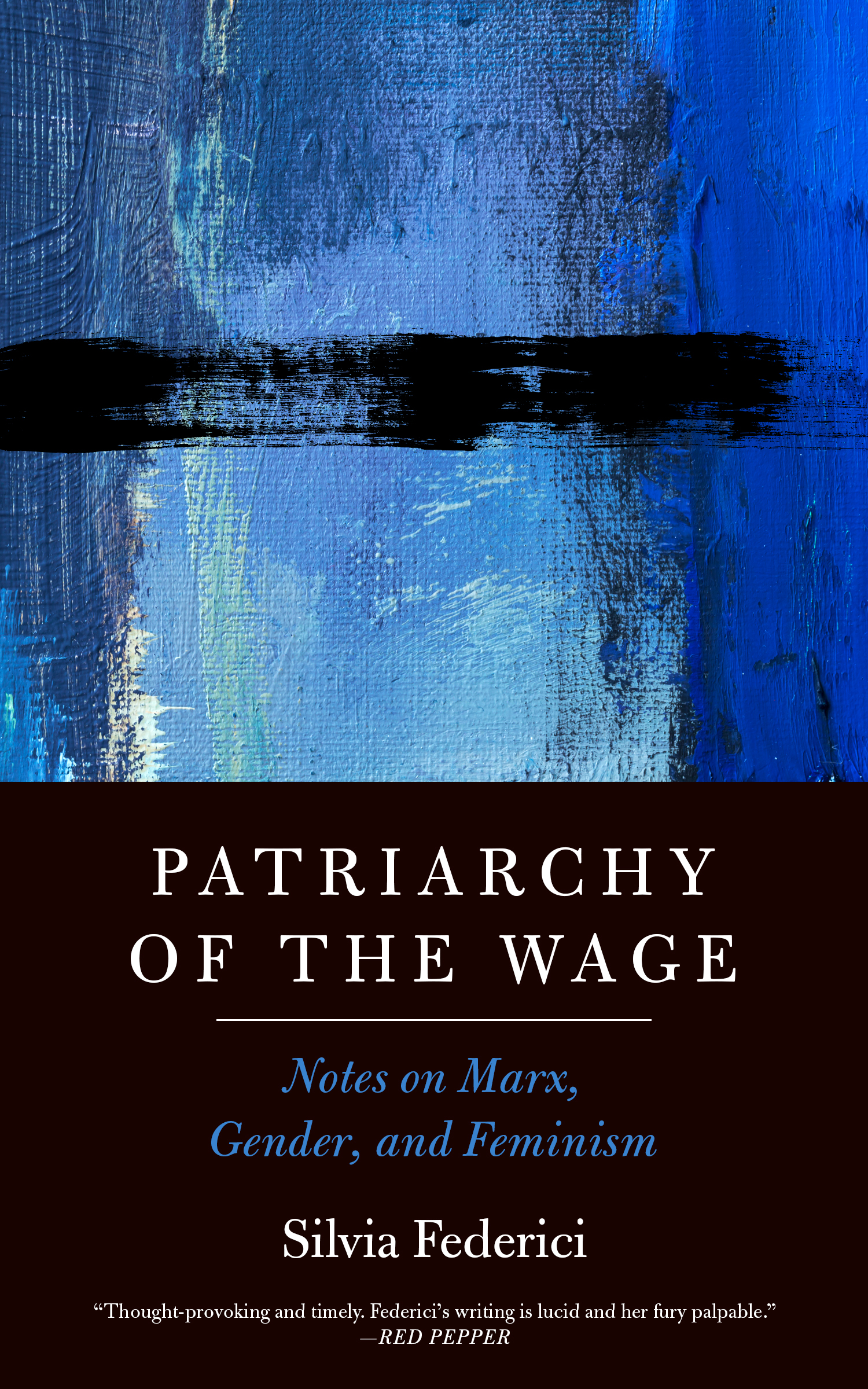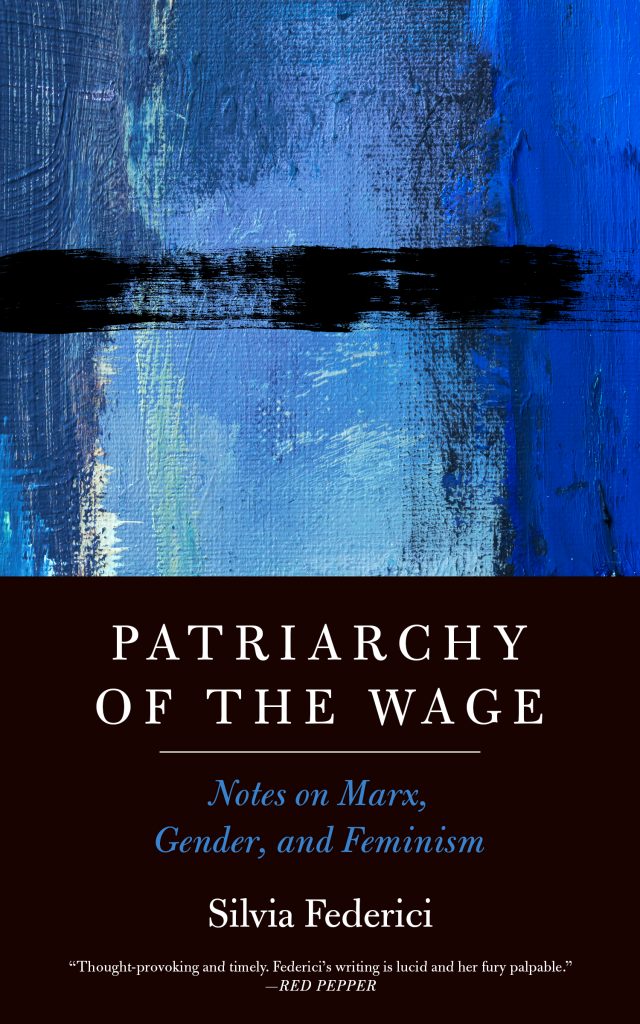By Meg Luxton
Labour/Le Travail, Volume #90
This collection of short essays by Silvia Federici addresses an important political and theoretical intervention into studies of work and labour. It provides an introduction to what Marx’s theory and methods offer feminism and what feminist theory and politics offer Marxism, left-wing political organizing and Labour Studies. It includes an introduction and seven chapters – two published in 1975, the rest published between 2014 and 2020. The strength of this collection is its discussion of the central acquisition of feminist theory’s engagement with Marxism – the recognition that women’s unpaid domestic labour contributes to the production of labour power, the essential commodity of capitalist production. (43)
Federici says that each essay “represents a moment in the development of a feminist discourse on Marx” and asks how the divide between two main emancipatory projects” – feminism and Marxism – can be joined. (5) This book traces the development of Federici’s thinking about women’s oppression in capitalism. It is clearly shaped both by her on-going conviction thatMarx’s methodology and critique of capitalism are necessary for any feminist understanding of women’s oppression and by her appreciation of Marx’s failure to examine the centrality of women’s domestic labour to capitalist accumulation. Because Marx erroneously prioritized capitalist production and waged labour as the central terrains of the class struggle, his analysis offers only “a partial view of the capitalist system” that “underestimated its resilience and its capacity to mobilize sectors of the proletariat as instruments of both sexist and racist policies.” (2) This failure, she insists, is perpetuated by most of the left. The book aspires to correct such problems. Its evaluation of Marx’s contributions is sound. It is less successful in clarifying what
feminist politics based on that analysis might involve.
The first two chapters (co-authored with Nicole Cox) were written in defence of the “wages for housework” campaign that Federici was instrumental in organizing in the 1970s. That campaign was one approach to the left feminist recognition that women’s unpaid domestic labour contributes to the production of labour power and hence to capital accumulation, an analysis that located women at the heart of anti-capitalist struggles, thus challenging the prevailing Marxist focus on (predominantly male and white) industrial workers. As Federici shows, the wages for housework activists argued that their demand for wages for housework is a “political perspective” (10) that is anti-wage and anti-capitalist. But they faced opposition, on the one hand from a left that resisted any challenge to the idea of the revolutionary centrality of the industrial working class, and on the other hand, from left feminists who either disagreed with the demand for wages or found unsubstantiated its claim to be anti-capitalist. Federici appears to lump both challenges together.
She elaborates on these positions in the subsequent chapters. While she insists that Marx’s political theory, methodology, and critique of capitalism are “a necessary foundation for an analysis of women’s exploitation in capitalist society,” (1) she critiques Marx’s narrow concept of work and the worker in capitalism and its enduring influence on current thinking. Writing in 2019, she says: “the Marxist left’s inability to see the reproduction of human life and labor power and the gender hierarchies built upon it as key elements in the process of capital accumulation continues.” (90) She denounces the left’s on-going obsession with the revolutionary potential of the (predominantly male and white) industrial working-class and offers a detailed criticism of the left’s failure or refusal to recognize the centrality of feminist struggles around unpaid work. She leaves unanswered the questions raised by left feminists.
Evaluating this book is complicated because these are short essays that weave together conventional academic arguments with political polemics. To be effective, both need to be persuasive, but by meeting somewhat different criteria. Federici combines sweeping claims with detailed critiques of a few authors but without engaging with the range of other arguments available. For example, while I agree with her critique of the way many leftists ignore social reproduction, I notice that she does not cite the extensive literature that highlights social reproduction nor does she engage in the debates occurring within that literature.
In another example, she attributes the development of the working-class male breadwinner – female housewife family and household form to the capitalist class and its state, supported by self-interested male workers. She offers no discussion of the extensive social history of the family that shows why many working-class women favoured that arrangement despite its oppressive consequences for women. She ignores the centrality of families for subordinated populations, especially Indigenous and racialized communities. She seems to have no appreciation of the way contradictions play out politically.
The main weakness of the book is Federici’s lack of engagement with the criticisms of wages for housework raised by left feminists. She claims that: “The left attacks our struggle, because as house-workers we do not measure up to the “productive” role they have assigned to the working class.” (26) She supports this assertion by quoting Wally Seccombe, who says: “Revolutionary transformation is only possible because the proletariat is directly engaged in socialized labour and therefore bears as a class the prerequisite of a socialist mode of production. While the labour of housewives remains privatized, they are unable to prefigure the new order or spearhead the productive forces in breaking the old.” (cited in Federici, 26) Federici insists that “this amounts to writing women out of the revolutionary process.” (27)
Rather, Seccombe notes that as long as housewives’ work is privatized in single households, so they are isolated from others, they can not work collectively for revolutionary transformation. The question is what social conditions could enable housewives to organize. Federici may disagree with Seccombe’s point, but as she offers no analysis of how housewives could mobilize collectively, her assertion lacks conviction.
She insists that the wages for housework demand is not for a monetary payment but says women want a wage because they need financial independence.(20) What is she actually calling for? She notes that the power to withhold production “has always been the decisive factor in the social distribution of wealth” (13) but fails to examine what withholding domestic labour might involve. She advocates the politics of the commons – to “enhance social cooperation, undermine the market’s and state’s control of our lives, and put an end to capital accumulation.” (54) She acknowledges the importance of race or decolonization but says little about how these ideas contribute to challenging racism or colonialism. She does not discuss how housewives could organize to improve their daily working conditions, relieve their financial dependence, and improve their lives and the lives of those they care about and for. Nowhere in this collection does she discuss what specific forms of struggle by unwaged housewives might challenge or destroy capital.
Convincing Marxists to take feminism seriously and persuading feminists to integrate Marxism with feminist theory continues to be a formidable challenge. Federici’s sophisticated knowledge of each and her passion for the political project make for compelling reading. Her contributions need to be grounded less in declarative assertions and more in specific details and careful assessments of competing arguments.







